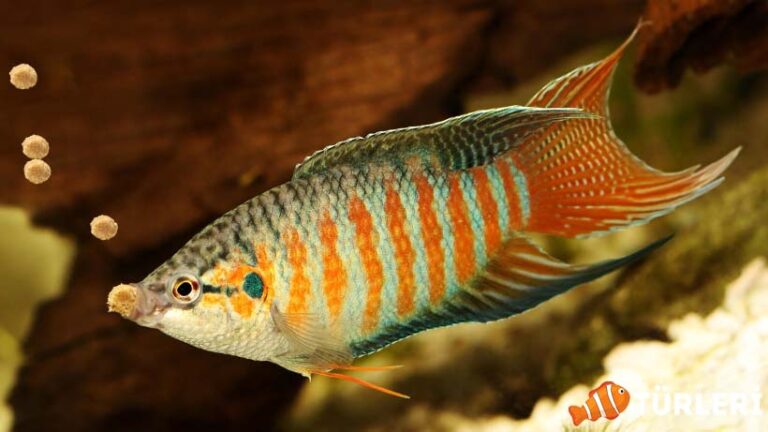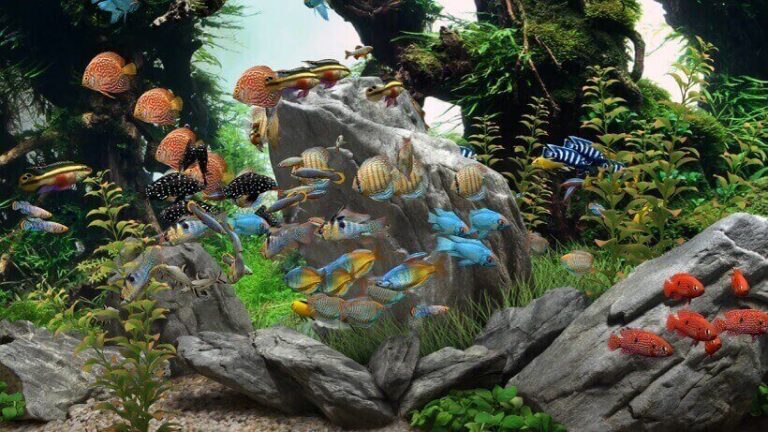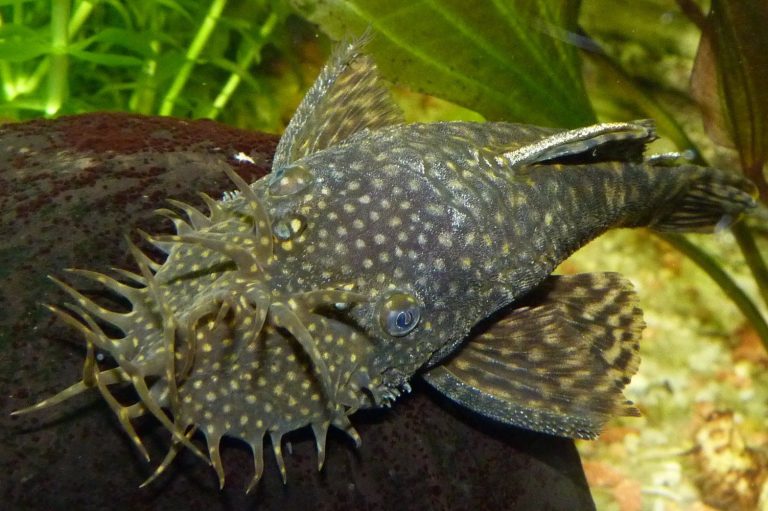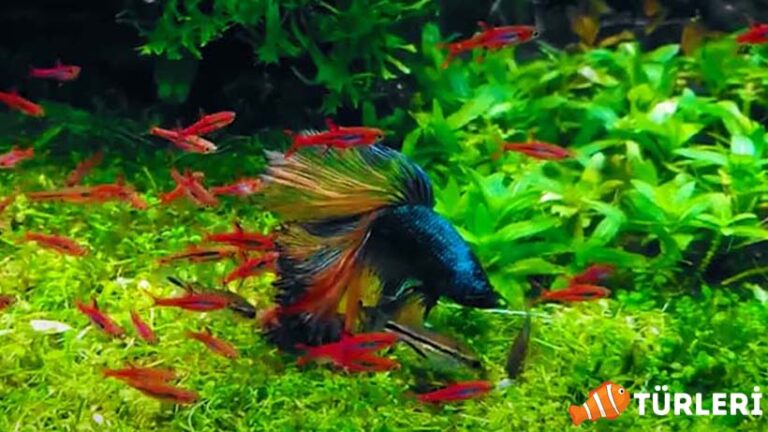Otocinclus (Otocat Fish) All Details
The Otocat fish (Otocinclus affinis) is a suction-mouthed freshwater catfish species native to South America. It ranks among the top in terms of algae-eating fish species.
They are lifesavers, especially for beginners. By consuming difficult-to-get-rid-of algae and moss, they significantly contribute to keeping your aquarium clean and healthy.
Easy to care for, the Otocat fish exhibits a moderate and peaceful behavior, allowing it to coexist with almost any fish species.
In this guide, you will learn about the care, characteristics, breeding, diseases, and much more about the Otocinclus affinis.
Otocat Fish (Otocinclus Affinis) Species Summary
| Scientific Name: | Macrotocinclus affinis |
| Origin: | South America |
| Diet: | Herbivore |
| Behavior: | Peaceful |
| Behavior Towards Their Kind: | Peaceful |
| Swimming Area: | Bottom, glass, and plant surfaces |
| Water Temperature: | 22 – 28 °C |
| Water Hardness: | 4 – 15 GH |
| pH Level: | 6.0 – 7.5 |
| Minimum Tank Size: | 40 Liters |
| Adult Size: | 5 cm |
| Breeding: | Egg-layers |
| Lifespan: | 3 – 5 years |
| Care Level: | Easy |
Characteristics
The Otocat fish is a small catfish species from the Loricariidae family. There are 19 different varieties within its species.
Known by many different names, this species is most commonly referred to as otocat and otocinclus. They are exceptional algae eaters, making them sought-after species for freshwater aquariums. They play a significant role in aquarium cleanliness and maintaining water quality.
One of the discouraging factors for someone new to the aquarium hobby is the problem of algae and moss. Therefore, it’s one of the species that beginners should definitely acquire.
Otocinclus Species There are many different Otocinclus species, and these extremely peaceful species are frequently preferred in aquariums.
The most popular varieties of the otocat fish, which has 19 different species, include:
- Otocinclus cocama
- Otocinclus vittatus
- Otocinclus macrospilus
- Otocinclus vestitus
- Otocinclus affinis
Appearance and Behavior

Otocat fish can come in various colors and countless patterns. Their adult size is no more than 5 cm, placing them among the smaller aquarium fish, making them suitable for nano aquariums.
In our country, the otocinclus affinis, known as the dwarf sucker, is not actually a sucker fish type. They are referred to by this name because their mouths look like suckers, just as they do in sucker species.
The most common colors are green, brown, and grey. They have a cylindrical shape that narrows towards the tail and head sections. To protect this small fish from rough and abrasive surfaces, they have an armor-like structure in their skin.
These fish are among the most peaceful and calm fish species you can ever see in aquariums. They spend their days doing their tasks calmly and without getting bored, without fighting with any living creature.
Natural Habitat
The homeland of the otocat fish is South America, and they are commonly found in Brazil, Argentina, and Venezuela. They live in oxygen-rich, shallow waters with slow to medium currents.
They spend most of their time clinging to plants and stones near the surface, feeding on the algae formed there.
Sexual Dimorphism
Distinguishing the gender of the otocat fish is not difficult. Females have a larger and rounder body compared to males. The colored parts of females appear more vibrant and bright than those of males. By looking at the image below, you can easily understand the differences in body sizes and shapes.
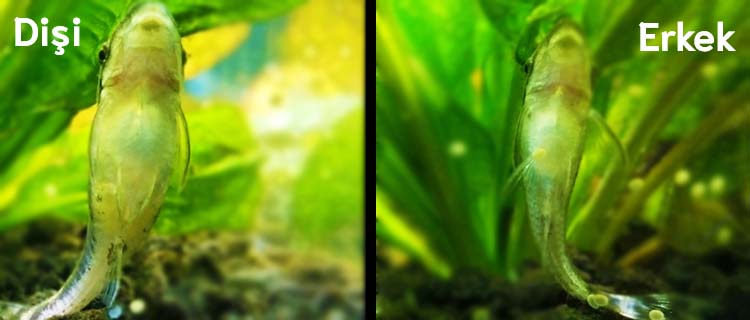
Which Fish Can They Live With?
When considering the Otocat fish, you have a plethora of options for accompanying fish. The critical point is not to keep them with predatory, overly large, and aggressive fish.
If you house them with such species, they will spend their time hiding or fleeing, and you’ll likely lose your Otocat fish in the process.
Additionally, you should pay attention to the water parameters required by the accompanying fish. Fish with opposite or vastly different water parameters should not be kept together.
Some examples of fish that should not be housed with Otocats include:
- Large cichlid species
- Oscar
- Jack Dempsey
- Freshwater angelfish
- Siamese fighting fish
- Paradise fish
- Certain goldfish species
- Particularly, caution should be exercised with fish having large mouths; otherwise, one morning you may wake up searching for your missing Otocinclus fish.
Some of the most suitable fish to be housed with Otocats include:
- Molly
- Guppy
- Panda corydoras
- Rasbora
- Cherry Barb
- Non-aggressive Tetra species
- Many snail species
- Amano and Cherry shrimp
Otocat Fish (Otocinclus Affinis) Care
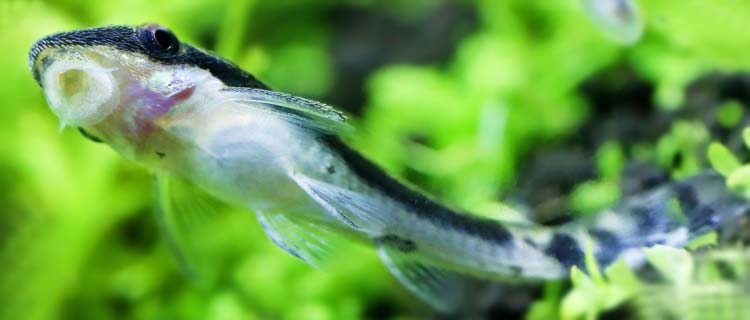
How should the care of Otocinclus affinis be done? The care requirements for Otocinclus affinis are simple and straightforward. One of the reasons they are so preferred in the aquarium hobby is due to this. In their natural habitats, these fish feel safe when they are in groups, hence they live in shoals.
Some sellers may suggest that buying 1-2 otocats will suffice for algae problems. Indeed, maybe 2 otocinclus will suffice for cleaning small aquariums, but to prevent them from getting stressed, they should always be kept in groups of at least 4-5 (preferably 10 or more).
Aquarium
Let’s discuss what needs to be done in addition to basic aquarium requirements.
Including plants and rocks in the aquarium setup is essential to mimic their natural habitats. You should create a stress-free environment by adding a few types of low-tech plants.
This fish is also quite accommodating when it comes to aquarium size. In a small, 40-liter aquarium, you can keep 5-6 otocat fish (it should not be kept in less than 40 liters). As the number of fish increases, the aquarium size should be increased correspondingly.
If possible, keep a generous amount of plants and also place various rocks. The closer you come to replicating their natural habitat in the aquarium setup, the healthier and longer-lived your fish will be.
Water Parameters
These fish generally do not require strict conditions and should be kept in neutral pH values. Although tap water in our country (in some regions) may meet their needs, its pH value is generally close to 8.
Weekly water changes should be regularly done, around 25-30%. You should dechlorinate the water either by letting it sit or by using various dechlorination agents.
The water temperature should be between 22-28 degrees Celsius. Many tropical fish thrive in these temperatures. Again, actions that will cause temperature fluctuations should be avoided to prevent stress.
Soft to medium water hardness is ideal for otocinclus. Since they live in oxygen-rich waters, an air pump should also be used.
The most ideal stable water conditions for otocat fish are; 24°C temperature, 7.0 pH, and 4 GH.
Feeding And Foods
A common misconception many people have is about feeding. Thinking that they feed on algae and don’t need additional food is quite wrong.
Like any other fish, otocinclus also need adequate nutrition. Feeding them once a day with various plant-based foods will suffice.
When choosing food, you should avoid unbranded, low-quality foods that are sold in bulk. These foods not only make the fish unhealthy but also significantly reduce water quality.
Branded plant-based flake, pellet, or tablet foods should be used. Although they are herbivores, they will also eat protein-rich foods. For healthy reproduction, you can feed them occasionally with brine shrimp.
Moreover, when cleaning the aquarium, there’s no need to clean it so thoroughly that you eliminate all the algae. Algae are their main source of nutrition, and even if not on the glass, you need to leave some algae on rocks and plants.
Otocinclus Affinis Reproduction
The Otocat fish has a moderate level of difficulty when it comes to reproduction. First and foremost, a secondary breeding aquarium is required for the fry to grow healthily, and this should be decorated with plants and rocks, much like a regular aquarium.
To accelerate the breeding process and encourage mating, the aquarium temperature should be lowered by 2-3 degrees from its regular temperature. The ideal male-to-female ratio for breeding is 2 males to 4-5 females.
When the male fish starts to circle around the female and shows increased interest, it can be understood that they are ready for mating. After mating, the female Otocat will lay her eggs on a suitable surface.
Then, the male fish will come and fertilize the eggs. After this process, you should move the adult fish back to the regular aquarium. If there are no issues after laying the eggs, you will likely see the fry swimming within just two days.
Otocinclus Sp Breeding
Breeding Otocinclus affinis is not as easy as caring for them. Breeding them is more challenging than most other fish. Both raising the fry and mating the fish are processes that require patience and effort.
As mentioned under the reproduction heading, after the mating processes, the care of the fry will come into play, but they do not have as simple care requirements as adults.
You must pay utmost attention to water values, aquarium cleanliness, the foods to be used, and feeding times. Especially, sudden changes in water parameters can easily lead to the death or illness of Otocat fry.
In the breeding aquarium, a 50% weekly water change should be carried out without fail. The temperature should be kept at a stable 24 degrees, and the water to be added during changes should also have close temperature, GH, and pH values.
The main food source for the fry, like adults, is algae. Therefore, you should be careful not to eliminate all algae and clean without going to extremes (or even avoid cleaning the algae altogether) to ensure they can feed.
Diseases
Otocinclus have a moderate susceptibility to diseases. Treatments for deadly diseases, which are rare, are not overly complex. The most crucial factor is the quality of the aquarium water. Fish are less likely to get sick in an aquarium free of harmful elements.
The most common diseases in Otocat fish are white spot disease (Ich), fungal infections, fin rot, and worm (parasitic) problems.
White Spot Disease (Ich): A prevalent disease in fish, it’s relatively easy to treat if detected early. [Read more about White Spot Disease]
Fungal Infections: This infectious disease manifests on the fish’s mouth and body. It’s especially dangerous if it affects the gills. [Read about fungal infections in fish]
Parasitic Worms: These long, thin worm-like parasites feed on the fish from the inside and can result in death if not treated. [Internal parasitic diseases in fish]
Fin Rot: A common bacterial infection in fish, it’s noticeable when fins and tails begin to deteriorate day by day. If treated, the fish can recover. [What is Fin Rot?]
This algae-eating cleaning crew is indispensable for aquariums. A common mistake many people make is keeping them in low numbers (1-3), in small and dirty aquariums.
While Otocat fish do not require special care, they need as much care as any typical aquarium fish. With regular cleaning and avoiding the buildup of harmful elements like ammonia and nitrites, they will continue to live healthily.
Please do not hesitate to use the comment section for any questions or feedback.
FAQs
Does Otocat Fish Live With Shrimp?
Otocinclus and shrimp species are both peaceful creatures. However, there’s a risk that the otocat fish might eat baby shrimps. In aquariums with a high shrimp population, this shouldn’t be an issue.
Is Otocinclus Affinis a Sensitive Fish?
Every aquarium fish can show sensitivity to certain things. Otocat fish, with the right aquarium setup and good care, can have a long lifespan.
Which Algae Do Otocinclus Affinis Eat?
The algae they are most effective at and like to eat are green dust, green spot, brown algae (diatoms), and hair algae. However, there are certain algae they won’t eat even if they are hungry, such as stag’s horn, red, and black beard algae.



